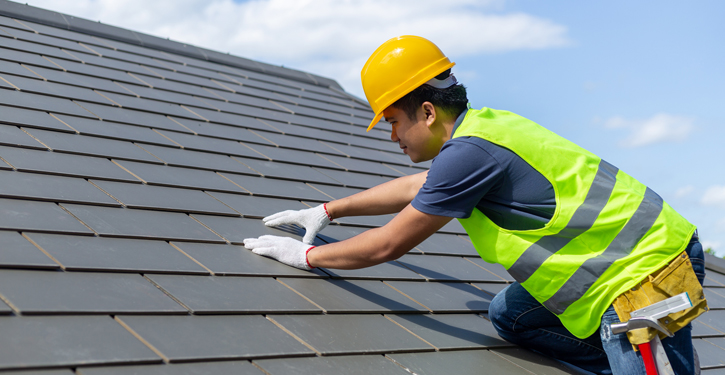A roof has the most exposure to the elements, such as the weight of heavy snow, bearing the brunt of torrential rainstorms, blocking out scorching heat, and withstanding high winds.
Despite all the hazards, the average lifespan of a roof is around 20 years. That kind of dependability can make it easy to take your roof for granted—until a summer thunderstorm brings unexpected hail or high winds cause a tree to fall across the garage. When roof damage occurs, a lot of homeowners find themselves wondering if they’re covered.
Covering roofs under homeowners policies
Usually, a homeowners policy will cover your roof as part of your policy’s dwelling coverage, and the cost of repairing or even replacing your roof in the event of damage will be covered. But there may be caveats.
Your policy will probably only cover damage or destruction caused by a sudden accident or act of nature. General wear and tear, deterioration due to neglect, or issues arising from a lack of maintenance probably won’t be covered.
It’s also important to know what your policy states about limits on your roof’s lifespan. For example, reimbursement amounts on some policies may be adjusted for age, especially for a roof over 20 years old. Some policies are for the replacement cost of the roof, while others will only reimburse you for the cash value of your roof at its current age.
Take time to review your policy and understand what it covers. You should also check whether wind and hail damage is included in your policy or must be added as an endorsement. You may need to purchase an additional windstorm or hurricane insurance policy in certain high-risk areas. To be sure you’re covered in any given scenario, it’s always best to talk to your agent. At Westwood, we’re always here to help you be sure you’ve got the right policy.
Be ready before roof damage ever occurs
No matter the age of your roof, routine maintenance is vital. Make regular inspections a part of this routine, and when possible, have these inspections done by professionals. Many companies will do this for free in the hope of earning future business.
Make sure your roof is always free of debris and standing water. Check for damaged shingles or gutters after a large storm and trim any tree branches touching the roof. Be sure also to take pictures of your roof often. This way, you’ll always have a recent “before” photo if damage does occur.
What should I do if my roof is damaged?
As soon as you notice damage has occurred, you should take a few steps to address the damage and make the claim process as smooth as possible.
- 1. Assess the damage, but only if you can do so safely. It’s important to note if the damage extends beyond your roof and, if you can, take steps to protect your home and prevent further damage, such as putting up a tarp.
- 2. Get an estimate from a roofing company, and be sure that this estimate is on company letterhead with contact information. This estimate should only include the cost to restore the roof to its condition before the damage, not for an upgrade. There may be an exception if you want to change to impact-resistant material but check with your agent before committing to the new material.
- 3. Gather documents to support your claim: current homeowners insurance policy, previous inspection reports that document the prior good condition of your roof, photos of the damage, pictures of your roof in good condition, and any home inspection reports.
- 4. Call your insurance company and schedule an inspection. Typically, an adjuster will come out to the property and inspect the damage to make their own assessment. It’s essential to act quickly, as delaying action can cause damage to deteriorate further and stall repairs.
Having your roof damaged is bad enough. Navigating the process of filing a claim doesn’t need to be another disaster. Your Westwood agent is here to help. Even if your roof is in great shape, we can help you review and understand your current policy coverage and provide different options if you need new coverage to fit your home or your budget. If your roof is struck by lightning or damaged by falling debris, we’ll be here to assist you with a claim. Get a quote or reach out today to see how we can help you protect the roof over your head.
Please Note: This article is for general informational and educational purposes only. It does not represent any specific insurance policy and does not modify any provisions, limitations, or exclusions of any current policy.





